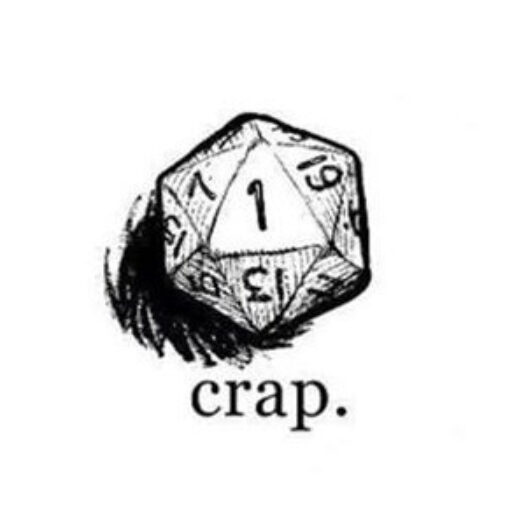Part of the appeal of Numenera 2 (Electric Boogaloo in the Butt) is the focus on building your own aldeia – your own Ninth World settlement amidst all those millions of years of ruined civilizations. The Ozymandius’ Mighty Works Tour Basecamp. The Ninth World has much to commend itself as a freewheeling Tour de Murderhobo setting, but there’s something about the balance of primitive society, bonkers crazy tech literally lying around and the imaginative descriptions of the existing settlements by Monte and Shanna and Bruce and Sean etc that fire the imagination with regards to trying to build something sort of permanent in a world that has made laughably impermanent eight previous star empire-level civilizations.
The setting remains the same, the old rules have gone nowhere, Twomenera is not a second edition, there’s just a few extra layers to the lasagna. And three of these layers are character types (tries to remember his Numenera sentence structure… A Descriptor Type who Focuses… yes, type) especially suited to serving in the building of a settlement: The Delve, an exploring scrounger type; The Arkus, a community leader/diplomat; and the Wright, a person who knows how to create new technology out of the bones of very old tech. There’s still PLENTY of room for the Glaive, Nano and Jack, of course as long as communities need their particular skills.
The settlements of the Ninth World are rare but awesome: pretty much every one we ran into is its own kind of place BUT worldbuilding is never as interesting as character building. A cool sandbox is still just a sandbox without the players creating interesting inhabitants interacting with that sandbox. The goal of worldbuilding shouldn’t be the be-all of the game: the worldbuilding is there to enhance the character building.

So if 2menera involves cool worldbuilding, how do we incorporate cool character building into that worldbuilding? Can the two be connected, interwoven? The best way I can think to do that is to make features of the world important to the characters. You can do this if you have established lore that everyone has access to: Belegorn, my Ranger of Arnor laments the lost lore of the fallen Dunedain kingdoms of the north and hopes for the return of the King to the throne of Gondor as his people’s last chance of order in a darkening world because that’s easy when you have a background lore as thicc as Tolkien’s. You can ascertain fairly complex relationships that likely exist between Belegorn and the world around him. But in a brand new, hot off the stream-of-consciousness mad libs we used to create our settlements? That’s harder.
Creating that character investment in a place, time and the people involved might be best created by using creative mini-games. Two games have me thinking of this: The Quiet Year and Dialect.

The Quiet Year is a collaborative map drawing game where players help narrate the growth and development of a community in between two great calamities. I listened to a Friends At The Table podcast that used TQY in order to create setting background and I really liked the idea. The rules set a structure to how the players narrate the recovery of the community from the first catastrophe and all that they accomplish before the second crashes upon them. When the game is done, you are left with a map showing a pictorial representation of not only the area, but the history of that year. And you have a ready made background for the character’s hometown. Maybe not the characters, you could be collectively creating the distant founding story of the settlement, not necessarily your character’s formative years.

Dialect also tells the story of an isolated community, but this time the story is told through the language they speak. It’s again a card based game that is collaborative and chatty and at the end of it you end up with a dialect and a story you’ve told about the speakers of that dialect. Language in games is tough to do well with a mostly monolingual (or at least no-one speaks the same second language and no-one has hopped aboard the Duolingo Italian Express with me) group of players (I’d be super interested in how groups of bilingual players incorporate language into their games, because it seems like you could do a lot) because the easy default is for everyone to speak Common or Truth or Ye King’s Tongue or whatever.
Language though can be an important part of the world you build though: consider what it means to be able to speak French in Middle Ages England. Or Welsh. Or Latin. Each of these languages tell you something about the speaker, the society it moves within and the role it plays in that society. Even crazy games-created cants like the weird argot of Planescape (which, maybe they knew, maybe they didn’t, but âBerk’, used kinda like âdude’ in Planescape, is rhyming slang for âcunt’, which always made Planescape seem like the most Australian of D&D settings) or the cheesy street-speak of Shadowrun’s alternate-Seattle. It was awful, but… it kinda worked. I can read it now in the Shadowrun isometric games (all good, btw) and I slip right back into that world.
Numenera has a leg up in this regard because while people might speak the Truth, a lot of what they are talking about is simply shit other people have never seen and can barely comprehend when it is described to them. It isn’t crazy, it’s just really complicated to describe. People are constantly describing never-before-seen, one-of-a-kind stuff to each other.
These two mini games – a map creation and a dialect creation game should create a plausible physical, social and historical narrative of a settlement, outside the control of one person. As a setting kick-off, I think it would require that it is started from fresh – using none of the 9th World background presented in the Rulebook. Maybe somethings borrowed, but both mini-games seem like they’d work best if given as few ties to existing lore as is possible.
Thing is, without the idea of getting an End Result out of both these mini-games, I’m not sure how satisfying they’d be to play. And getting an End Result isn’t the goal of either game. The play’s the thing. There’s no resolution to either game. You end up telling a fragment of a story. But hopefully – the entire idea this sparked in me – is that this fragment of a story is enough to get going creating the world in which the characters are then created. And crucially, it would be a world I’d be only marginally involved in… and that’s sort of exciting as a GM. I get to be as surprised as the players.




